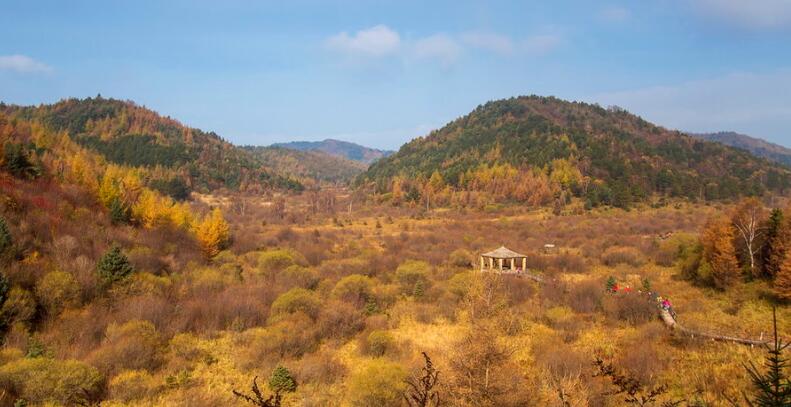On the southern slope and in the middle of the Qinling Mountains, in Taibai county, lies the Huangbaiyuan Nature Reserve. Its lush forests and mountain hills are the core distribution areas for wildlife in Shaanxi province, and one of the highest density giant panda distributions within the Qinling Mountains. In 2006,the Shaanxi Huangbaiyuan Provincial Nature Reserve was established on the former Huangbaiyuan Forestry Farm of the Taibai Forestry Bureau of Shaanxi.
The Huangbaiyuan Nature Reserve has a total area of 21,865 hectares, and borders five nature reserves, Taibai, Foping, Changqing, Laoxiancheng and Niuwei River. The Huangbaiyuan Nature Reserve connects with the Dashuping and Erlangba giant panda corridor and overlaps with the Taibai Xushuihe Aquatic Wildlife Nature Reserve. It’s situated in the core of the nature reserves of Qinling Mountains, and is an important wildlife corridor for the Xinglong and Niuwei River giant panda populations, enabling interaction and breeding between the two giant panda populations.
The topography of Huangbaiyuan Nature Reserve is similar to that of a dumbbell, as north to south is high while the middle is low. The elevation ranges between 1,280 to 3,120m in the south are the Xinglongling Mountains while the north adjoins the main ridges of the Qinling Mountains. Dense forests and rivers cover this region, and the mountains are the water source for the Han River system and South to North Water Diversion Project, which involves drawing water from southern rivers and supplying it to the dry north. The vegetation types in the reserve are diverse and are vertically distributed thus as the elevation rises, the plant species changes. In the winter and spring seasons the giant pandas travel to an elevation below 2,200m to forage amongst the pine and oak forests, the most prolific being the Oak and Chinese Pine. Throughout the summer; the giant pandas primarily forage from an elevation from 2,200 to 2,600m where the vegetation alters into birch forests, mainly the Betula albosinensis; Red Birch, 3nd Betula albosinensis var. septentrionalis; north Chinese red birch. During the summer the giant pandas frequent the fir forests that cover the land from 2,600 to 2,900m, predominantly Abies Fargesii Franch; the Farges Fir. At 2,900 to 3,120m the forests are characterized by Larix chinensis Beissn; Chinese larch.
According to the investigation, there are 346 species of wild vertebrates in the reserve, accounting for 46.82% of the total numbers in Shaanxi. There are 7 first class national protection animals some of which are the Ailuropoda melanoleuca; giant panda, Cercopithecus kandti; the golden monkey, Budorcas taxicolor; takin, and the Moschus berezovskii; dwarf musk deer. Additionally there are 38 first & second class national protection plants, such as the Taxus Chinensis; the Chinese yew, Cercidiphyllum Japonicum; the katsura, Tetracentron sinense; the genus of a flowering plant, fraxinus mandshuhca; Manchurian ash and much more. Its unique geographical advantages, rich wildlife and ecosystem, make the reserve an important element in biodiversity conservation and scientific research.
Since founded, the reserve also puts conservation first, and rescued three giant pandas and five golden monkeys.
Transect lines are determined from a global positioning system (GPS) data point and using that location to research plots of land of approximately 2km2 to collect giant panda fur, scat, observe behaviors, nest sites, markings, food sources and much more. Since 2006, the reserve monitors 68 giant panda transect lines regularly each year, and due to their hard work and perseverence to collect and analyze the data despite rough and difficult conditions they were rewarded the Shaanxi Advanced Collective for giant panda monitoring in Qinling Mountains. In the 4th Panda Census of Shaanxi in 2012, the Huangbaiyuan Nature Reserve had completed one fourth of the total survey mission with an area of 1280km2, and won the praise and recognition of the Forestry Department of Shaanxi, the public, scientists and organizations.









